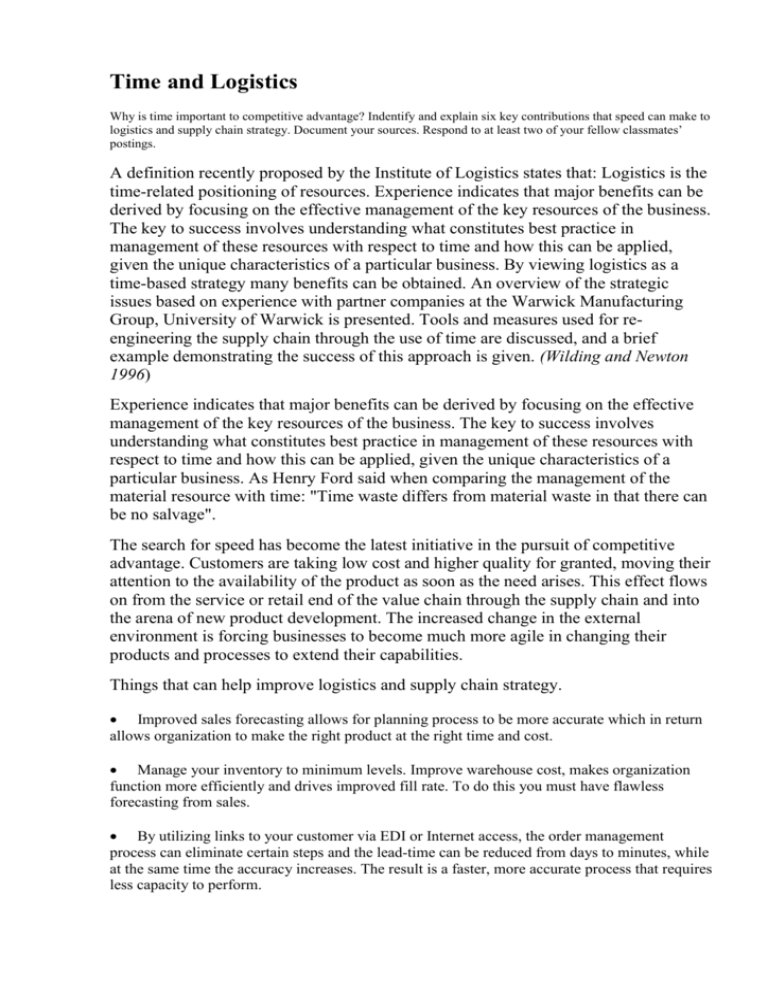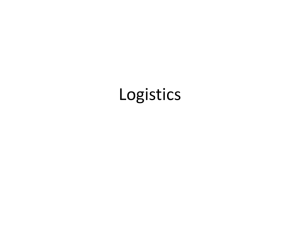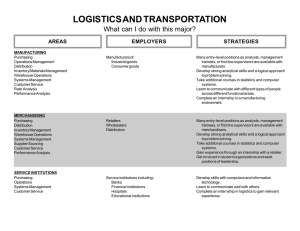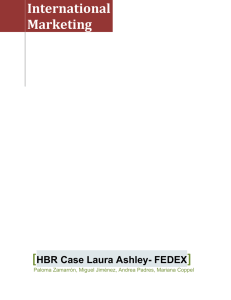Why is time important to competitive advantage
advertisement

Time and Logistics Why is time important to competitive advantage? Indentify and explain six key contributions that speed can make to logistics and supply chain strategy. Document your sources. Respond to at least two of your fellow classmates’ postings. A definition recently proposed by the Institute of Logistics states that: Logistics is the time-related positioning of resources. Experience indicates that major benefits can be derived by focusing on the effective management of the key resources of the business. The key to success involves understanding what constitutes best practice in management of these resources with respect to time and how this can be applied, given the unique characteristics of a particular business. By viewing logistics as a time-based strategy many benefits can be obtained. An overview of the strategic issues based on experience with partner companies at the Warwick Manufacturing Group, University of Warwick is presented. Tools and measures used for reengineering the supply chain through the use of time are discussed, and a brief example demonstrating the success of this approach is given. (Wilding and Newton 1996) Experience indicates that major benefits can be derived by focusing on the effective management of the key resources of the business. The key to success involves understanding what constitutes best practice in management of these resources with respect to time and how this can be applied, given the unique characteristics of a particular business. As Henry Ford said when comparing the management of the material resource with time: "Time waste differs from material waste in that there can be no salvage". The search for speed has become the latest initiative in the pursuit of competitive advantage. Customers are taking low cost and higher quality for granted, moving their attention to the availability of the product as soon as the need arises. This effect flows on from the service or retail end of the value chain through the supply chain and into the arena of new product development. The increased change in the external environment is forcing businesses to become much more agile in changing their products and processes to extend their capabilities. Things that can help improve logistics and supply chain strategy. Improved sales forecasting allows for planning process to be more accurate which in return allows organization to make the right product at the right time and cost. Manage your inventory to minimum levels. Improve warehouse cost, makes organization function more efficiently and drives improved fill rate. To do this you must have flawless forecasting from sales. By utilizing links to your customer via EDI or Internet access, the order management process can eliminate certain steps and the lead-time can be reduced from days to minutes, while at the same time the accuracy increases. The result is a faster, more accurate process that requires less capacity to perform. Bar coding implementation increases the speed and accuracy of the warehouse operation, reduces the risk of picking the wrong products and increases the inventory accuracy. · The inventory management function can link all aspects of the distribution operation together and avoid such decisions as choosing a lower-cost carrier with a lower performance. In this example, the increased inventory requirements and their associated costs are likely to be more than you will save in transportation costs, while the reliability of delivery to the customer will most probably deteriorate. Continue to evaluate every step of the value chain to look for further opportunities every day! Never be satisfied with the improvements made, look how to make it better! Reference Harrison, A. & van Hoek, R. (2011). Logistics management and strategy: Competing through the supply chain (4th ed). London, England: Prentice Hall Financial Times. ISBN: 978-0-273-73022-4 Wilding, R. D., & Newton, J. M. (1996). Enabling time-based strategy through logistics - using time to competitive advantage. Logistics Information Management, 9(1), 32-38. Retrieved from http://search.proquest.com/docview/220040543?accountid=32521











